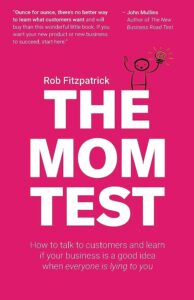The Complete Guide To The Dynamic System Development Method (DSDM)
In a world where adaptability and innovation reign supreme, traditional project management methods often fall short of meeting the dynamic demands of today’s rapidly evolving business landscape. Enter the Dynamic System Development Method, or DSDM, a revolutionary approach that not only embraces change but thrives on it.
Are you ready to dive into the exciting realm of DSDM, where flexibility meets structure and creativity fuels success? Buckle up, as we embark on a comprehensive journey through the ins and outs of DSDM, uncovering how this methodology empowers teams to deliver projects with unparalleled speed, efficiency, and, above all, innovation. Whether you’re a seasoned project manager or a curious newcomer, this guide will equip you with the tools to master the art of adaptable development and drive your projects to new heights.
What is DSDM Agile?
DSDM stands as an Agile approach that encompasses the entirety of the project lifecycle. Originating in 1994 under the name “Dynamic System Development Method,” DSDM came into existence when project managers who were adopting Rapid Application Development (RAD) recognised the need for enhanced governance and structure within this novel iterative approach. The triumph of DSDM can be attributed to its underlying belief that every project should harmonise with well-defined strategic objectives and prioritise the prompt delivery of tangible advantages to the business. By upholding this philosophy through its eight core principles, teams can effectively uphold their concentration and attain the aims set forth by the project.
Is The DSDM Framework Only Used For Software Development?
The applicability of DSDM extends beyond software projects, encompassing a wider range of product development endeavours. This method’s utility isn’t confined solely to software; rather, it can be effectively employed in various product development contexts. Through the practice of delivering functional increments at the conclusion of each designated timebox, DSDM facilitates the early provision of tangible business value within the product development lifecycle.
DSDM Benefits

The advantages of DSDM adoption are manifold. Companies that embrace DSDM benefit from enhanced teamwork and stakeholder engagement, fostering clearer communication and a more profound grasp of project objectives. DSDM’s iterative approach equips teams to promptly adapt to modifications, mitigating the potential for project disruptions stemming from evolving requisites. Furthermore, DSDM’s focus on providing tangible benefits to end-users guarantees that projects yield substantial outcomes. Through the consistent integration of end-user input, DSDM facilitates the creation of solutions that harmonise with user anticipations and corporate requirements.
DSDM Drawbacks
While DSDM (Dynamic Systems Development Method) stands as a robust agile framework; nevertheless, it’s crucial to weigh potential drawbacks:
- Complexity: DSDM’s comprehensive nature can occasionally introduce complexity, especially for smaller projects where not all its components are necessary.
- Learning Curve: Embracing DSDM involves training and adaptation, which might initially slow down project advancement.
- Rigidity for Some Teams: Agile purists could perceive DSDM’s structured approach as too inflexible compared to more adaptable agile methodologies.
- Stakeholder Involvement: Sustaining continuous stakeholder engagement might pose challenges, potentially causing delays if stakeholders are not consistently accessible.
- Documentation Overload: The emphasis on documentation could lead to an excess of paperwork, potentially diverting attention from actual development efforts.
- Resource Intensive: DSDM’s iterative nature necessitates consistent input from team members, potentially stretching available resources.
- Limited Applicability: Although suitable for software development, DSDM might not seamlessly align with other industries or projects outside the software domain.
- Initial Resistance: Teams accustomed to different methodologies might encounter resistance during the transition to DSDM. You can learn more about getting teams on board with agile principles here.
- Risk of Scope Creep: The emphasis on accommodating changes can occasionally trigger scope creep if not managed adeptly.
- Dependency on Skilled Facilitators: Effective DSDM implementation often hinges on skilled facilitators, and their availability could impact the execution of projects.
The 8 DSDM Principles
The foundation of the entire framework rests upon the 8 DSDM principles. The project team’s strict adherence to each principle is imperative, as disregarding any of these principles could elevate the risk of project failure.
1. Be Business-Driven
DSDM employs a resolute business-centric methodology. A compelling business case must be formulated for the project, with the project team comprehending the overarching priorities. Every decision made by the team over the course of the project should be oriented towards realising the project’s objectives, ensuring both timely delivery and goal attainment.
Using MoSCoW
To uphold this principle, DSDM teams have a range of tools available to them. One such tool is the MoSCoW technique, which aids the team in prioritising business requirements by categorising them as Must have, Should have, Could have, or Won’t have. Timeboxing further assists in breaking down work into manageable time segments, each with its own set of deliverables and deadlines.
The Foundation phase within DSDM plays a pivotal role in fostering concentration. During this phase, the team establishes their respective roles and subsequently forms the overarching strategy. Decisions are made regarding risk and quality assessment, technological utilisation, and project management approaches.
2. Be Timely

DSDM operates as an agile framework that structures work into defined time periods known as timeboxes, akin to sprints in Agile Scrum methodology. The primary objective is to present a functional software product by the conclusion of each timebox, signifying an incremental and iterative approach to software development. DSDM’s emphasis on swift delivery is evident, asserting that even projects without explicit time constraints still derive value from adopting them. This is due to the fact that deadlines offer optimal control over evolving requirements.
To uphold this principle, DSDM teams should centre their efforts on prioritisation, meeting deadlines, and skilful time management, effectively employing techniques such as MoSCoW and timeboxing.
3. Be Collaborative
Promoting team cohesion and fostering collaboration holds significant significance within DSDM teams. This perspective arises from a deliberate departure from the paradigm of disparate departments with minimal interaction. Instead, teams are urged to function as a unified entity, collaborating seamlessly to stimulate comprehension, elevate performance levels, and cultivate a shared sense of ownership.
DSDM teams actualize this principle by amalgamating business and technical personnel into cohesive units, eliminating separation. The engagement of stakeholders is a constant endeavour throughout the project, with each team member being empowered to make decisions. Workshops are utilised to convene stakeholders and actively integrate them into the project’s progression.
Furthermore, the roles of visionary, ambassador, and business advisor work in harmony to fortify collaboration. The visionary role ensures clear communication of sponsor requirements to the team and safeguards the realisation of business case objectives. Ambassadors bridge the gap by conveying user needs to the development team, while business advisors contribute expertise in areas such as law or marketing. These roles, vital to fostering collaboration, might not exist or be segregated outside the project realm in a non-agile context.
4. Focus on Quality
Quality within DSDM projects is invariably established from the outset and remains constant throughout the project’s lifecycle. The determined level of quality must be steadfastly upheld, with the final product aligning precisely with this pre-defined benchmark.
To uphold this principle, DSDM teams must diligently guard against the fluctuation of quality. This is achieved through ongoing testing and regular review processes, which are integral components of the exploration and engineering iterative development stages. Emphasizing early-stage testing is crucial. Once more, techniques like MoSCoW and timeboxing can be effectively employed to ensure that testing procedures are appropriately calibrated and well-organised.
5. Build Firm Foundations

DSDM sets itself apart from other agile methods by necessitating early consensus on the project’s fundamental elements. While these foundational aspects need not delve into excessive detail, they should encompass an agreement on the core problem and its corresponding solution. Following the establishment of these foundations, the solution is then incrementally developed and delivered.
To uphold this tenet, DSDM teams must prioritise conducting preliminary analysis and design at the project’s outset, a practice referred to as Early Design Up Front (EDUF). With each incremental stage, the team must undertake a reassessment of priorities and project feasibility, attentively integrating feedback from stakeholders. The feasibility and foundation phases provide the groundwork, while the exploration and engineering phases facilitate the incremental release of the solution.
6. Develop Iteratively
DSDM advocates the notion that perfection is seldom achieved on the initial attempt, and projects are conducted within a perpetually evolving environment. The practice of incremental delivery, endorsed by DSDM, enables the embrace of change and ultimately results in elevated stakeholder contentment. Each iteration intertwines testing, demonstrations, and feedback, thereby ensuring continuous enhancement and culminating in a commendable end product.
To embody this principle, DSDM teams should integrate feedback mechanisms into each iteration. They need to adopt a perspective that allows details to unfold over time, rather than prematurely. The acceptance of change is paramount. Throughout each iteration, fostering an atmosphere of creativity and experimentation is essential, fostering learning and advancement. A consistent cycle of review and feedback paves the way for both change and progress.
In the pursuit of delivering an incremental and functional software release by each iteration’s conclusion, DSDM prescribes the utilisation of the MoSCoW prioritisation technique. This technique aids in determining the priority of requirements for the team’s focus during a designated timebox. Typically, these requirements are formulated as user stories.
7. Clearly Communicate
Inadequate communication frequently paves the way for project failures, and conventional non-agile methodologies often overlook addressing this critical aspect. DSDM endeavours to enhance communication by employing regular face-to-face interactions, visual communication through modelling, early release of prototypes, and immersive workshop sessions.
DSDM teams can effectively uphold this principle through several strategic approaches. One avenue is the encouragement of team interaction through daily stand-up meetings, fostering informal yet collaborative discussions on issues and ideas. Facilitated workshops offer stakeholders an impactful means to enhance comprehension and engage in comprehensive requirement discussions.
Modelling and prototyping are central to DSDM’s drive to amplify communication. These pragmatic techniques alleviate the need for cumbersome and redundant documentation. Modelling serves as a visual medium for communication, harnessing diagrams to impart a better understanding of intricate systems, designs, and products.
Prototyping, a cornerstone of DSDM, involves creating early-stage product prototypes to allow stakeholders to engage with nascent versions of the solution. The fundamental notion here is to swiftly construct a functional representation, acquire prompt feedback, and identify areas for refinement sooner rather than later. DSDM’s underlying philosophy posits that uncovering potential issues as early as possible is preferable, enabling timely course correction. In essence, prototyping entails crafting preliminary prototypes of the product during the initial stages of development, facilitating stakeholders’ firsthand experience with early iterations of the solution.
8. Control Project Outcomes
Maintaining project control stands as a paramount consideration. DSDM posits that achieving this objective hinges on the adoption of a well-aligned plan that mirrors the project’s objectives, all of which should be accessible to the entire team.
DSDM teams, particularly led by the project manager and team leader, can effectively uphold this tenet through the practice of ensuring plans and ongoing progress remain visible to all team members. Proactive management is crucial, underscored by robust reporting and vigilant tracking mechanisms. Furthermore, the evaluation of progress should pivot around delivered outcomes rather than merely completed tasks. The implementation of timeboxing further empowers the regulation of task assignments and scheduling.
DSDM can also synergize with methodologies like Kanban, which aids teams in visually comprehending project advancement, tracking task assignments, assessing timelines, and discerning task execution. This collaborative integration enhances the visibility of who is engaged in what, when, and the estimated duration of their involvement.
The DSDM Process

DSDM operates within a framework that combines both iterative and incremental methodologies. This entails prioritising the delivery of paramount business requirements in the early stages, while addressing less critical ones in subsequent phases.
With its iterative nature, DSDM facilitates a dynamic process where business representatives actively engage with the evolving solution. They provide ongoing feedback and can request modifications as the solution continues to develop.
The DSDM process model encompasses six distinct phases, distinguishing it from many other Agile approaches that primarily concentrate on delivery. These phases are:
- Pre-project
- Feasibility
- Foundations
- Evolutionary development
- Deployment
- Post-project
DSDM Agile Practices
DSDM puts forth four fundamental practices for consideration:
Timeboxing
Similar to various other agile frameworks, DSDM structures its tasks within predetermined time intervals known as timeboxes, resembling the concept of sprints in Scrum methodology. The objective here is to provide a functional product by the conclusion of each iteration, signifying an incremental strategy coupled with an iterative approach to product development.
Facilitated workshops
Facilitated workshops serve as a platform where project stakeholders convene to collaboratively outline business requirements and enhance mutual comprehension.
Modelling and Iterative development
Modelling serves as a valuable tool for team members, enabling them to visualise intricate business domains and augment their comprehension thereof. By employing modelling, teams can generate diagrammatic representations that encapsulate specific facets of the system or the domain under development.
To achieve the goal of delivering incremental functional software releases at the conclusion of each iteration, DSDM hinges upon maintaining a concise feedback loop with the customer. It advocates the utilisation of the MoSCoW prioritisation technique to determine which requirements the team should address within a given timebox. Typically, these requirements are encapsulated in the form of user stories.
Additionally, DSDM embraces the application of prototyping. The fundamental concept revolves around swiftly constructing a tangible representation, expediting feedback acquisition, and identifying any potential shortcomings sooner rather than later. The foundational DSDM ethos is rooted in the belief that detecting potential hurdles at an early stage is preferable, enabling a prompt recalibration of direction.
MoSCoW prioritisation
The MoSCoW prioritisation technique aids businesses in ranking their business requirements by categorising them as Must have, Should have, Could have, or Won’t have within each designated timebox.
DSDM Vs Scrum

If you possess prior knowledge of other agile project management frameworks, these principles might resonate with you. Both the Scrum methodology and DSDM highlight the significance of gradual enhancements and repeated deliveries.
However, the distinction between DSDM and Scrum lies in their scope of project management. DSDM offers a more all-encompassing approach, incorporating an extensive array of roles that span project governance, whereas Scrum predominantly concentrates on the operational team.
DSDM Certifications
Are you aiming to evolve into a proficient team leader adept in Agile practices to ensure top-tier outcomes? To refine your abilities and substantiate your expertise, contemplating specific examinations could be beneficial. These assessments will not only elevate you to the status of a recognised DSDM practitioner but also equip you for more extensive responsibilities.
Numerous reputable organisations offer these credentials, including AgilePM, AgileBA, APMG, or the Scrum Master certification provided by the Agile Business Consortium.
FAQ
What is The DSDM Methodology?
The Dynamic Systems Development Method (DSDM) stands as an agile project management and software development framework designed to offer a structured approach for efficient project delivery, all the while retaining the flexibility to adapt to evolving requirements. It seeks to find a harmonious equilibrium between the imperative of meeting project deadlines and budgets, and the necessity of accommodating shifting customer demands and business objectives.
The key traits of DSDM are:
- Iterative and Incremental: DSDM adheres to an iterative and incremental development methodology, fragmenting projects into manageable phases called timeboxes. These timeboxes culminate in potentially deployable increments of the product.
- Timeboxing: Timeboxes are fixed time periods during which specific tasks or goals are accomplished. These timeframes, usually spanning a few weeks, facilitate frequent reviews, adjustments, and user feedback.
- Prioritized Requirements: DSDM places a strong emphasis on ranking requirements based on their business significance. It places priority on addressing the most critical needs first, ensuring that the project delivers maximal value from the outset.
- Collaboration and Communication: Active collaboration among cross-functional teams, stakeholders, and end-users is pivotal within DSDM. Consistent communication ensures alignment and contribution towards project triumph.
- Stakeholder Involvement: Stakeholders play an integral role throughout the project lifecycle, offering ongoing feedback and validation to guarantee that the final product aligns with their requirements.
- Prototyping: DSDM encourages the generation of prototypes to validate ideas and gather user feedback early in the development cycle, thus reducing the risk of creating an inadequate product.
- Testing and Quality Assurance: Testing is woven into the fabric of the development process, ensuring adherence to quality standards. This collaborative effort involves the development team and quality assurance professionals.
- Phased Approach: DSDM is structured around several phases, encompassing Feasibility, Business Study, Functional Model Iteration, Design and Build Iteration, and Implementation. These phases navigate the project from its inception to its final realisation.
- Time and Resource Management: Effective management of time, costs, and resources holds a pivotal role within DSDM. The project team operates within predefined tolerances to ensure project adherence.
- Adaptive Approach: Acknowledging the fluidity of requirements, DSDM offers mechanisms to accommodate change while minimising disruption to project timelines and objectives.
What Does DSDM Stand For?
DSDM represents the acronym for Dynamic Systems Development Method.
What is The 80/20 Rule And How Does It Apply To DSDM?
The 80/20 principle, often referred to as the Pareto Principle, asserts that 80% of outcomes result from 20% of inputs. This concept underpins pragmatism within a DSDM project. The significance of the Pareto Principle lies in its reminder to concentrate on the pivotal 20%.
Overview
Amid the ever-evolving terrain of project management, the DSDM framework emerges as a resilient and malleable approach. DSDM, denoting the Dynamic Systems Development Method, constitutes an agile methodology that underscores collaboration, adaptability, and the tangible delivery of value.
Fundamentally, DSDM presents a structured yet adaptive framework impeccably suited for contemporary business demands. It is meticulously crafted to embrace evolving requisites while upholding a steadfast commitment to meeting delivery schedules and ensuring high-quality results. DSDM operates on a foundation of eight pivotal principles, encompassing active user engagement, iterative cycles, and an unwavering focus on business imperatives.
If you’re interested in reading more about other agile methodologies, we’d recommend you check out our guides to :
- An Introduction to The Agile Methodology
- Themes, Epics and User Stories – The Core Components Of Agile
- Embracing Agile Team Dynamics
- What is SAFe Agile and Why Should I Use It?
- What is Waterfall Development?
- What is Lean Development?
- What is Scrum?
- A Deep Dive Into Epics
- Exploring The Power of User Stories
- How Can I Use Personas?
- Decoding Agile Estimation (Story Pointing)
- Agile Transformation: How Can My Business Start Using Agile?
- The Spotify Approach To Agile Development
- What Is Agile Portfolio Management?
- Agile Glossary
- Agile Statistics







